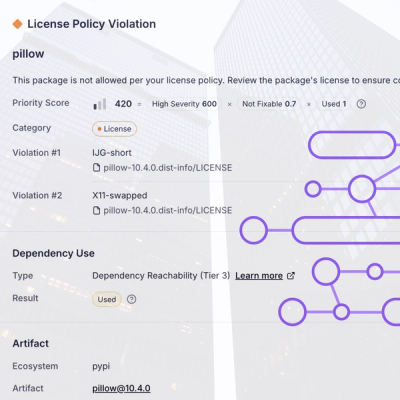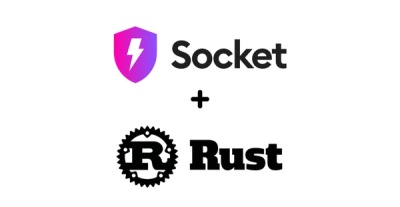
Research
/Security News
Critical Vulnerability in NestJS Devtools: Localhost RCE via Sandbox Escape
A flawed sandbox in @nestjs/devtools-integration lets attackers run code on your machine via CSRF, leading to full Remote Code Execution (RCE).
easy-mesh-gradient
Advanced tools


To install, use npm:
npm install easy-mesh-gradient
or yarn:
yarn add easy-mesh-gradient
import easyMeshGradient from "easy-mesh-gradient";
const gradientString = easyMeshGradient();
document.body.style.backgroundImage = `${gradientString}`;
The easyMeshGradient function accepts an optional options object with the following properties:
pointsAn array of points that define the mesh gradient. Each point should have the following properties:
x: The x coordinate of the point as a decimal between 0 and 1.y: The y coordinate of the point as a decimal between 0 and 1.h: The hue of the point as a number between 0 and 360.s: The saturation of the point as a decimal between 0 and 1.l: The lightness of the point as a decimal between 0 and 1.scale: A number representing the size of the gradient fade around the point.If the points option is not specified, the library will generate points using the pointsGenerator function (see below).
easingA function that defines the easing of the gradient transitions between points. This function should accept a number between 0 and 1 and return a number between 0 and 1. The default easing function is easeInOutCubic.
easingStopsThe number of intermediate colors to use in the gradient transitions between points. The default value is 10.
seedA string that is used to seed the random number generator when generating points. This allows the generated points to be reproducible.
pointCountThe number of points to generate when using the pointsGenerator function. The default value is 5.
scaleRangeA 2-element array that defines the minimum and maximum allowed values for the scale property of generated points. The default value is [0.5, 2].
hueRangeA 2-element array that defines the minimum and maximum allowed values for the h property of generated points. The default value is [0, 360].
saturationRangeA 2-element array that defines the minimum and maximum allowed values for the s property of generated points. The default value is [0.5, 1].
lightnessRangeA 2-element array that defines the minimum and maximum allowed values for the l property of generated points. The default value is [0.5, 1].
pointsGeneratorA function that generates an array of points when the points option is not specified. This function should accept an options object with the same properties as the main easyMeshGradient function, and return an array of points with the same structure as described above for the points option. The default pointsGenerator function is provided by the library.
import easyMeshGradient from "easy-mesh-gradient";
const gradientString = easyMeshGradient({
points: [
{ x: 0.1, y: 0.1, h: 120, s: 0.8, l: 0.6, scale: 1 },
{ x: 0.5, y: 0.5, h: 60, s: 0.7, l: 0.5, scale: 1.5 },
{ x: 0.9, y: 0.9, h: 300, s: 0.6, l: 0.4, scale: 1 },
],
easingStops: 20,
});
document.body.style.backgroundImage = `${gradientString}`;
This will generate a mesh gradient with 3 points, using 20 intermediate colors in the gradient transitions and the default easing function. The resulting gradient will be applied as the background-image of the document.body element.
MIT
(documentation co-authored by chatGPT 😄)
FAQs

The npm package easy-mesh-gradient receives a total of 23 weekly downloads. As such, easy-mesh-gradient popularity was classified as not popular.
We found that easy-mesh-gradient demonstrated a not healthy version release cadence and project activity because the last version was released a year ago. It has 1 open source maintainer collaborating on the project.
Did you know?

Socket for GitHub automatically highlights issues in each pull request and monitors the health of all your open source dependencies. Discover the contents of your packages and block harmful activity before you install or update your dependencies.

Research
/Security News
A flawed sandbox in @nestjs/devtools-integration lets attackers run code on your machine via CSRF, leading to full Remote Code Execution (RCE).

Product
Customize license detection with Socket’s new license overlays: gain control, reduce noise, and handle edge cases with precision.

Product
Socket now supports Rust and Cargo, offering package search for all users and experimental SBOM generation for enterprise projects.